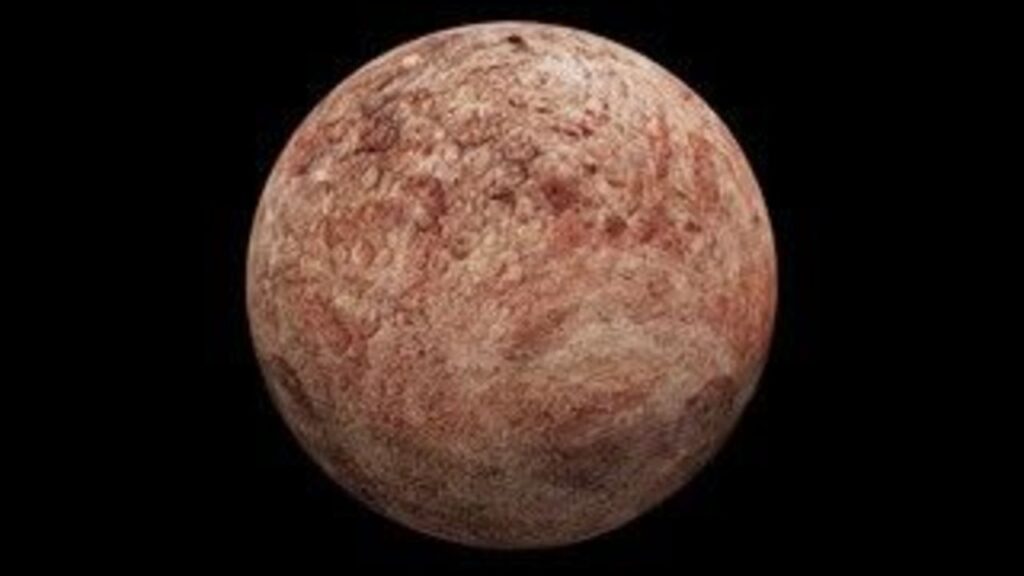
Scientists have identified methane gas on the dwarf planet Makemake, marking a significant discovery that suggests this distant celestial body is a lively icy world. The research team, led by the Southwest Research Institute (SwRI), utilized NASA’s James Webb Space Telescope (JWST) to make this observation. With this finding, Makemake becomes only the second trans-Neptunian object, following Pluto, confirmed to have gas.
The presence of methane was highlighted by Silvia Protopapa, the lead author of an upcoming paper in The Astrophysical Journal Letters. “The Webb telescope has now revealed that methane is also present in the gas phase above the surface, a finding that makes Makemake even more fascinating,” Protopapa stated. She noted that this discovery indicates that Makemake is not merely an inactive remnant of the outer solar system, but a dynamic body where methane ice is still evolving.
Makemake, which has a diameter of approximately 890 miles (or 1,430 kilometers), is about two-thirds the size of Pluto. The methane detection was made through the identification of a spectral signature of solar light reflected by methane molecules. This breakthrough could hint at a tenuous atmosphere surrounding Makemake, or it might suggest transient activities akin to those observed in comets, where volatiles sublimate, or from cryovolcanic plumes, according to the study’s authors.
If the detected atmosphere is a permanent feature of Makemake, it is extremely thin. The surface pressure is estimated to be around 10 picobars, which is approximately 100 billion times less than Earth’s atmospheric pressure. The authors also modeled scenarios where methane is released in plume-like outbursts. Their simulations propose that this gas could be expelled at rates of several hundred kilograms per second, comparable to the water plumes found on Saturn’s ocean moon Enceladus.
Future observations with the JWST, utilizing higher spectral resolution, are expected to clarify whether the methane originates from a thin, bound atmosphere or from plume-like outgassing. Ian Wong, a staff scientist at the Space Telescope Science Institute and co-author of the paper, emphasized the importance of these upcoming observations.
Earlier studies of Makemake, conducted when the icy world traversed in front of a star, suggested that it did not possess a significant atmosphere but did not entirely eliminate the possibility of a much thinner one.
The research paper, titled “JWST Detection of Hydrocarbon Ices and Methane Gas on Makemake,” is currently available on the preprint repository arXiv. This discovery not only enriches our understanding of Makemake but also raises intriguing questions about the characteristics of other distant celestial bodies in our solar system.







